
Thunder Bay is a city in and the seat of Thunder Bay District, Ontario, Canada. It is the most populous municipality in Northwestern Ontario and the second most populous municipality in Northern Ontario; its population is 108,843 according to the 2021 Canadian Census. Located on Lake Superior, the census metropolitan area of Thunder Bay has a population of 123,258 and consists of the city of Thunder Bay, the municipalities of Oliver Paipoonge and Neebing, the townships of Shuniah, Conmee, O'Connor, and Gillies, and the Fort William First Nation.

Fort William was a city in Ontario, Canada, located on the Kaministiquia River, at its entrance to Lake Superior. It amalgamated with Port Arthur and the townships of Neebing and McIntyre to form the city of Thunder Bay in January 1970. Since then, it has been the largest city in Northwestern Ontario. The city's Latin motto was A posse ad esse, featured on its coat of arms designed in 1900 by town officials, "On one side of the shield stands an Indian dressed in the paint and feathers of the early days; on the other side is a French voyageur; the cent[re] contains a grain elevator, a steamship and a locomotive, while the beaver surmounts the whole."

Union Station is a major railway station and intermodal transportation hub in Toronto, Ontario, Canada. It is located on Front Street West, on the south side of the block bounded by Bay Street and York Street in downtown Toronto. The municipal government of Toronto owns the station building while the provincial transit agency Metrolinx owns the train shed and trackage. Union Station has been a National Historic Site of Canada since 1975, and a Heritage Railway Station since 1989. It is operated by the Toronto Terminals Railway, a joint venture of the Canadian National Railway and Canadian Pacific Railway that directs and controls train movement along the Union Station Rail Corridor, the largest and busiest rail corridor in Canada.
Port Arthur was a city in Northern Ontario, Canada, located on Lake Superior. In January 1970, it amalgamated with Fort William and the townships of Neebing and McIntyre to form the city of Thunder Bay.

Thunder Bay Airport is an airport in the city of Thunder Bay, Ontario, Canada. With 108,130 aircraft movements in 2012, it was the fourth busiest airport in Ontario and the 16th busiest airport in Canada. During the same year, more than 761,000 passengers went through the airport.

The Thunder Bay City Council is the governing body of the city of Thunder Bay, Ontario, Canada. It consists of a mayor and twelve councillors. The mayor and five of the councillors are elected at large, with one councillor being elected for each of the city's seven wards: Current River, McIntyre, McKellar, Neebing, Northwood, Red River, and Westfort. Council members are elected to four year terms. The last election was held on October 24, 2022

King's Highway 61, commonly referred to as Highway 61 and historically known as the Scott Highway, is a provincially maintained highway in the Canadian province of Ontario. The 61-kilometre (38 mi) route connects the Pigeon River Bridge, where it crosses into the United States and becomes Minnesota State Highway 61, with a junction at Highway 11, Highway 17 and the Harbour Expressway in Thunder Bay. The highway forms part of the Lake Superior Circle Tour.
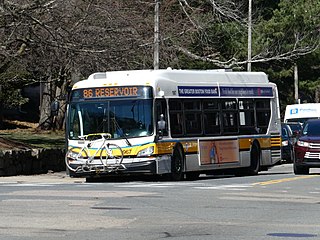
Route 86 is a local bus route in Boston, Cambridge, and Somerville, Massachusetts, operated by the Massachusetts Bay Transportation Authority (MBTA) as part of MBTA bus service. It operates on a circumferential route between Sullivan Square station and Reservoir station via Union Square, Somerville, Harvard Square, and Brighton Center. In 2018, it had the 18th-highest weekday ridership on the system, though it ranked 37th by number of weekday trips. A 2018–19 MBTA review of its bus system found that route 86 had infrequent and unreliable service, including irregular scheduled headways, despite its high ridership and significance as a crosstown connecting route.

Thunder Bay is a large bay on the northern shore of Lake Superior, in Thunder Bay District, Ontario, Canada. The bay is about 50 kilometres (31 mi) long and 22 kilometres (14 mi) wide. It is bordered to the east by the Sibley Peninsula at the southern tip of which is Thunder Cape, marking the entrance to the bay for ships approaching from the east. The mesas and sills on the peninsula are known as the Sleeping Giant due to their appearance when viewed from Thunder Bay.
The Thunder Bay Expressway, originally known as the Lakehead Expressway is a high-capacity at-grade suburban limited-access road around the western side of Thunder Bay in the Canadian province of Ontario. The 15.3 km (9.5 mi) route travels in a generally north–south direction on the city's west side. It is signed as part of Highway 61 at its southern end, and as part of the concurrent route of Highway 11 and Highway 17. The expressway features several at-grade intersections between its southern terminus at Arthur Street West and the Harbour Expressway and its northeastern terminus at Hodder Avenue.
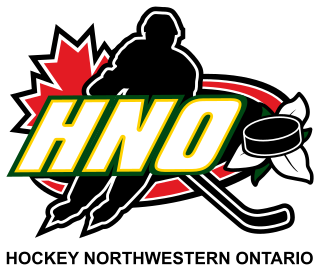
Hockey Northwestern Ontario (HNO) is the governing body of all ice hockey in Northern Ontario, Canada. Hockey Northwestern Ontario is a branch of Hockey Canada.
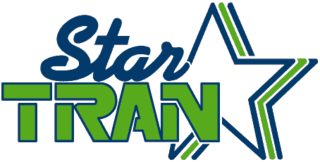
StarTran is the public transit bus system in Lincoln, Nebraska, United States. It operates 18 regular bus routes and a downtown circulator service on weekdays from 5:15 a.m. to 9:55 p.m. and Saturdays from 5:55 a.m. to 7:05 p.m. There is no service on Sundays. There is a special Handi-Van transportation service for those who have a disability that prevents them from riding a regular city bus.

Saskatoon Transit is the public transport arm of the City of Saskatoon, Saskatchewan, Canada. It operates a fleet of diesel buses. A total of 23 bus routes serve every area of the city, carrying approximately 11 million passengers in 2008. Saskatoon Transit is a member of the Canadian Urban Transit Association. The major bus terminal is located Downtown.
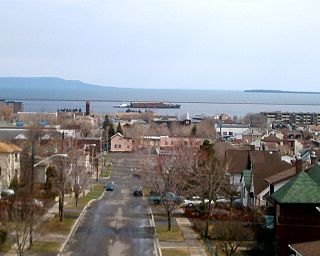
Transport in Thunder Bay is essential to trade, which has always been the backbone of the economy, beginning with Fort Kaministiquia in 1717. When the area was first settled its many waterways were used by the voyagers and Coureur des bois to trade their goods.

Cornwall Transit, serves the City of Cornwall, Ontario, Canada with 15 buses that transport about 538,833 passengers per year. Founded in 1971 and originally operated under contract by A.J. McDonald Limited the system has been city run since 1974. It provided bus service replaced the Cornwall Street Railway, which provided tram service since the end of the 19th century.

Downtown Fort William, also known as Downtown Thunder Bay South or the South Core, is the urban core of the former city of Fort William, the southern half of Thunder Bay, Ontario. It is centred on Victoriaville Civic Centre, an indoor shopping mall and civic centre built as part of an urban renewal project in the 1980s. It is separated from the Kaministiquia River by the Canadian Pacific Railway line, and its topography is relatively flat.
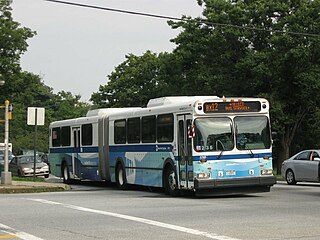
The Bx12 is a public transit line in New York City running along the 207th Street Crosstown Line, within the boroughs of Manhattan and the Bronx. The line runs along 207th Street in Upper Manhattan and along the continuous Fordham Road and Pelham Parkway in the Bronx.
The 2006 Thunder Bay municipal election was held on 13 November 2006 in Thunder Bay, Ontario to elect a mayor, 12 city councillors, trustees for the Lakehead District School Board, the Thunder Bay Catholic District School Board, the Conseil scolaire de district du Grand Nord de l'Ontario, and the Conseil scolaire de district catholique des Aurores boréales. This election coincided with the 2006 Ontario municipal elections being held across Ontario.
The Thunder Bay Junior A Hockey League (TBJHL) was a Canadian junior ice hockey league that existed from c. 1920 to 1980. The TBJHL operated in Northwestern Ontario, primarily in the Thunder Bay region.
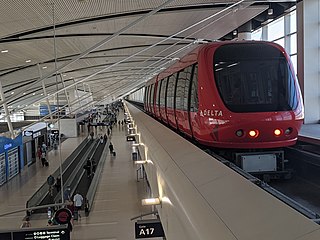
Transportation in metropolitan Detroit comprises an expansive system of roadways, multiple public transit systems, a major international airport, freight railroads, and ports. Located on the Detroit River along the Great Lakes Waterway, Detroit is a significant city in international trade, with two land crossings to Canada. Three primary Interstate highways serve the region.




















